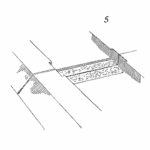
Proper control chart selection is critical to realizing the benefits of Statistical Process Control. Many factors should be considered when choosing a control chart for a given application. These include:
- The type of data being charted (continuous or attribute)
- The required sensitivity (size of the change to be detected) of the chart
- Whether the chart includes data from multiple locations or not
- The ease and cost of sampling
- Production volumes
For variable data, X-Bar and R (or Xbar and S) charts are very common, however there are cases when they are not appropriate. For example, charts for multiple locations within the subgroup are utilized when a subgroup consists of measurements that may come from different distributions. Examples include:
- Multiple measurements on the same unit (e.g. diameter in 3 places)
- Units produced during the same cycle from different cavities, machining locations, filling heads etc.
When sampling is costly, within-sample variation is negligible, or it is not required to detect “small” process changes, charts of individual measurements are often utilized. EWMA and CUSUM charts are useful when charting individual measurements but the traditional Individuals/Moving Range charts do not provide adequate sensitivity (ability to detect process changes when they occur).
The following table may be utilized to help select an appropriate control chart for each application. The charts are segregated by data type. Charts for variable data are listed first, followed by charts for attribute data.

Leave a Reply